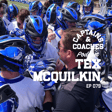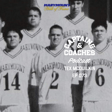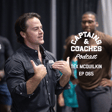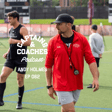
069 - The Aggressive Play Paradox
"We were either going to win the game or win the fight." - Anthony Mason
That's the crossroads every competitor faces. But here's the paradox: the aggression we think makes us tougher often makes us weaker. The intensity we believe gives us an edge can be the very thing that costs us the game—and something far more valuable.
In this episode we heat up one of sport's most misunderstood dynamics: the difference between coercive aggression and impactful assertiveness.
Most coaches tell athletes to "be more aggressive" or "you gotta want it more." But what if that language is leading us in the wrong direction? What if the fire we're trying to ignite is actually burning down the very character we're trying to build?
Here's what we'll unpack:
✅ The Three Types of Aggression – and why only one of them might be serving your performance
✅ Physical, Verbal, and Emotional Assertiveness – the skills that separate leaders from reactors
✅ The Response Ability Routine – a practical framework for mastering the space between stimulus and response
✅ Real Stories from the Trenches – including how one practice fight revealed everything about leadership and intent
This isn't about playing soft. It's about playing smart. It's about channeling intensity into impact, not destruction. Because the scoreboard will fade, but who you're becoming through sport? That's permanent.
The question isn't whether you compete hard. The question is: what kind of person are you becoming in the process?
Training - Old Bull Program - 7 Day Free Trial - https://bit.ly/old-bull-train
Education - Why They're Not Listening: Coaching the Modern Athlete - http://listen.captainsandcoaches.com



















